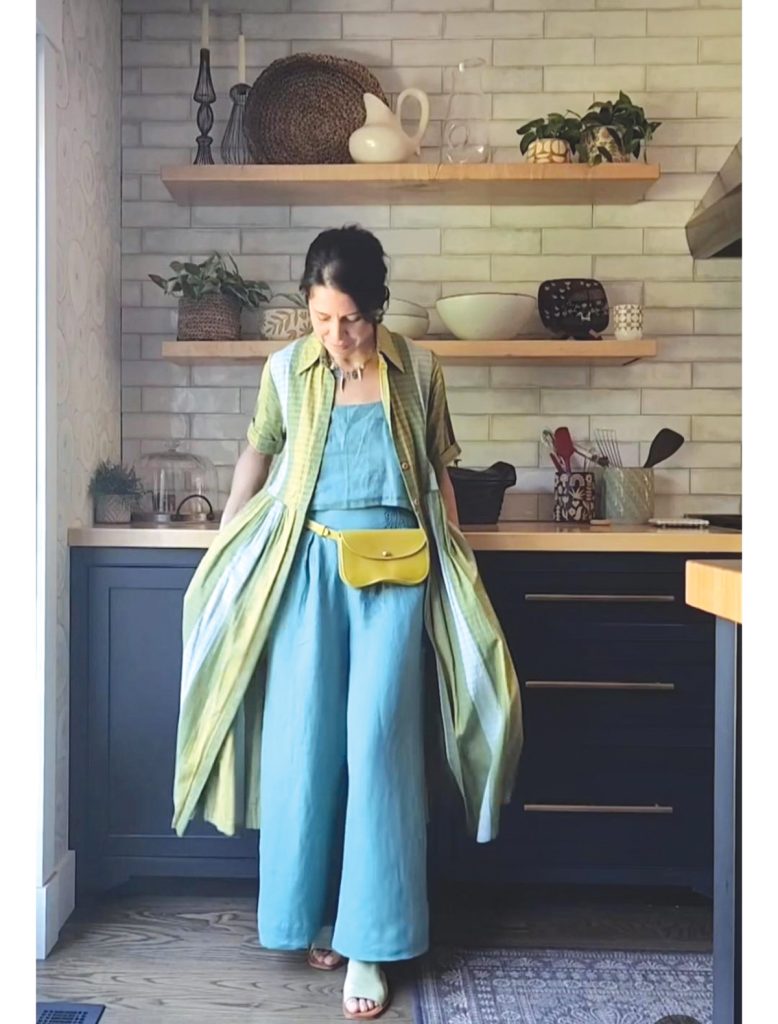
Fashion can go deeper than we give it credit for, allowing us to express our unique identities, enhance our persona, break norms, and adapt to changing attitudes and gender dynamics. New fabrics and applications can inspire creativity. Fashion lets us embrace our individuality and stand out, which makes us happy. This trend has been called “dopamine dressing” by style publications.
Social media is full of ads prompting us to check out trends on clothing for all seasons and events. This is as appealing as it can be fun. Some of us have a style all our own that defines us, displayed as an art form like a personal tattoo. It can be frustrating for both the shopper and retailer when trying to get the fit right, and trying to be environmentally conscious, as most returned clothing ends up in a landfill. Some people in the apparel industries are turning to Artificial Intelligence (AI) to solve these issues. We’re still in the early phases of this, yet it’s already mind-blowing!
AI can aid both customers and manufacturers in solving a host of fashion faux pas. It can determine better-fitting clothing, which makes shoppers happier, reducing their waste and the industry’s environmental impact. Designers use AI to create fabrics and garments, and consulting firms use it to predict trends. AI can even authenticate upscale items, like Coach bags and Rolex watches. Social media can play a big role in this, as all this magic happens via data collection. Customers buying from larger retailers often leave reviews about the fit of their clothing or shoes. That data is collected, and the retailer may then suggest buying one size larger or smaller based on the feedback averages, helping to avoid returns. Whether you’re an armchair shopper or creator, AI could be your new best friend. Let’s say you design your own clothes and offer them for purchase via Instagram. Potential buyers can virtually try on the clothes using AI apps.
You may have already used these when purchasing prescription glasses online, or even envisioning how household items like a throw rug will look in your living room. Apps like DressX, enable you to project garments onto your body, then play with colors, textures and accessories to get the look and fit you’re trying to achieve. If you’re a designer, maybe you’re envisioning something particular you want to create. All you have to do is tell AI to create it, and voila! Then when you go to market your designs online, AI can help you generate attractive backgrounds. See your creation come to life by entering written prompts into AI generators via businesses like Off/ Script. Piece together mock creations in the platform’s design studio, where other users vote on their favorites. Off/ Script oversees the process of converting the winning designs into physical inventory, making your vision a reality. You’re now all set to show off and sell your AI-designed clothing and accessories.
But what about those small businesses we love to support? Apparently, AI can actually hurt them. Fashionista Dee Dee DiSanto, who believes in supporting recycled, remixed looks, smaller stores owned by Black, Indigenous, People of Color (BIPOC), and women, says, “I do not use AI and I don’t think it is relevant or helpful to what I’m doing. I’m in a fairly small niche of the fashion world, slow fashion. Many of my followers and brands that I work with are artists and craftspeople. AI is fundamentally at odds with what we are working to do, which is to elevate traditional and ecologically sound techniques to make clothing.” DiSanto says building a slow fashion wardrobe can be a long and often intensive process. “Since most small brands are online only and can be quite expensive, finding pieces that work for you and your budget takes time and patience, but when it comes down to it, the most sustainable wardrobe is pieces that you wear and love. Something can be beautiful and well-made, but if it doesn’t fit quite right or vibe with other pieces in your wardrobe, it will just sit and collect dust. That’s why I love using the @lucky.sweater app to trade pieces that don’t quite work for me. It’s a fun and low-cost way to find new pieces with no extra outlay of funds.”
Check out her Instagram, @textile.mixologist. What is slow fashion? DiSanto explains, “Slow fashion is essentially the opposite of fast fashion, meaning high quality clothes made in an ethical and environmentally friendly way. They cost more but have a higher value because they are made to last. Most clothes made by large retailers like Zara or H&M, or worst of all, Shein, use factories in countries like China and India where the working conditions are abysmal and there is a high level of pollution. The cost for production is born on the backs of the people living and working there.” Ask yourself, if you knew this was happening, would you still want to buy from these retailers? It may all come down to whether you are a trendy person, or keen on accentuating your individuality. Either way, whether you are a designer or simply a fan of expressive clothing, fashion remains a fun and vivacious way to swank your stuff— the world is your catwalk! •
Photo by DeeDee DiSanto
